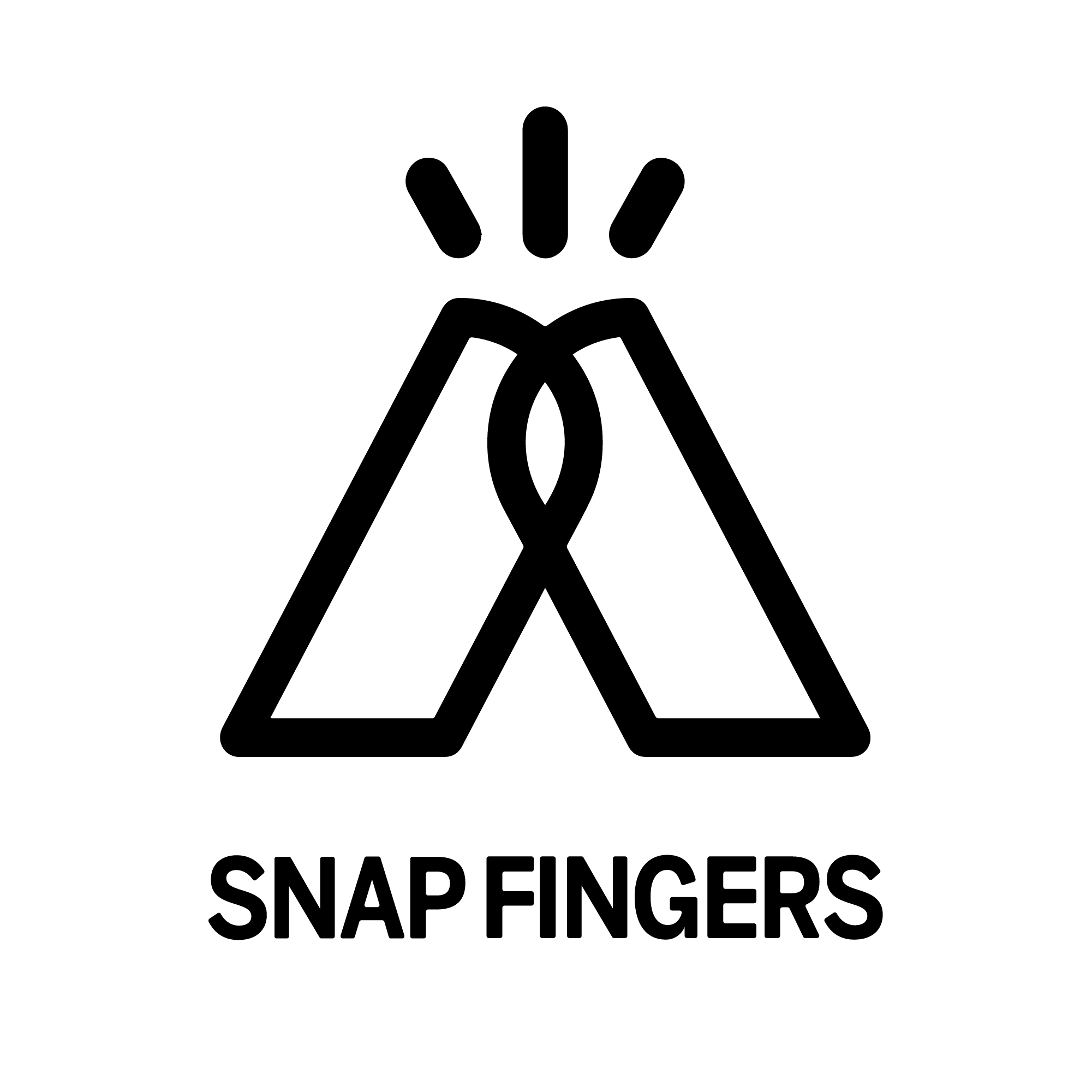Author: memeswap.bit#8864 | Fishball#5156
Advisor: TeferiChiu#8950 | FriedWagyu#9974 | Jer#1798
first level title
01
what is generative art
secondary title
1.1 Definition of generative art
The definition of generative art in Wikipedia is:image description
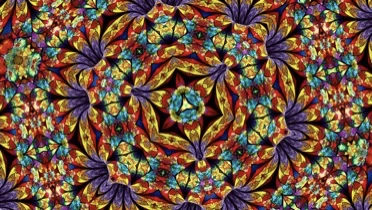
https://www.meimg.com/show/301283
image description
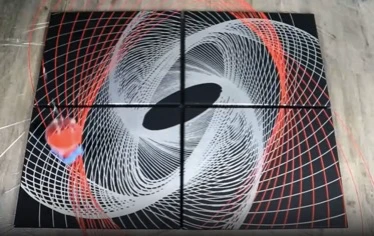
https://www.bilibili.com/video/BV1pD4y1d7W2/
image description

image description
The picture shows the screen saver of Apple mobile phone
With the development of technology, the performance of generative art is now more realized through programming or signal acquisition. Generative art can be regarded as a high degree of combination of artistic creation and advanced technology, and is usually highly related to computer art.
secondary title
1.2 Characteristics of Generative Art
1.2.1 The transformation of artist identity: from subjective creator to art creation system architect
The role of the artist has changed from the subjective creator in traditional art to the architect of the art creation system.Generative artists formulate artistic creation rules through algorithms, and guide the system to execute to obtain artistic and random results. Similar to the work of artificial intelligence engineers, generative artists need to continuously iterate the algorithm model in the test, eliminate or improve the worst part of the generated image, so that the generated image series not only has visual beauty, but also has rich features and coherent changes. Consistent visual expression.
Of course, some generative artists will improve the results. For example, 1000 pictures are generated, and only 333 of them that he thinks look better are kept in the end. But there are also some generative artists who build the machine or system and let it play, and will not screen out the parts that humans subjectively consider poor. Because for them, the machine or system itself can have different aesthetic criteria from human beings (this obviously anthropomorphizes them), randomness itself is the source of artistry, and artists need not and are not qualified to use a Intervening in the behavior of machines or systems from a meta-perspective, or thinking that their standards of beauty are superior to those of machines or systems. This creative method of relying entirely on machines or systems to realize generative art without secondary screening by artists is fully demonstrated in the first on-chain generative art dApp Art Blocks on Ethereum, which the author will discuss in the second half of this article Detailed elaboration.
1.2.2 Randomness and Visual Consistency
When the artist builds the algorithm, he has already set parameters such as color ratio, graphic texture, symmetry, etc., so when the user mints (Mint) to generate an artistic NFT,Although the randomness of the algorithm will make each work different, the works of the entire series will also have the overall consistency of visual expression.image description

Memories of Qilin by Emily Xie on Art Blocks is a great example of randomness and visual consistency.
1.2.3 High efficiency and easy iteration
Compared with traditional art creation, which takes days or even months, generative art can be reused after the program is built, and can quickly generate thousands of different creative results. Artists can also quickly explore different artistic styles and creative concepts by modifying programs and adjusting parameters, and can also migrate programs to different generative artworks for combined use.
secondary title
1.3 The Rise of Generative Art
With the advancement of technology and the enrichment of human digital life experience, the expression and creation methods of art are increasingly affected by technology. While the reach of digital artwork has been growing, many creators of digital artwork do not have the same earning potential as creators of physical works.
And all this has changed with the introduction of blockchain technology and NFT. After Ethereum launched the ERC721 token specification for NFT, NFT trading platforms specially designed for top artists appeared one after another in 2017. At that time, only invited artists could publish their works on platforms such as SuperRare and Nifty Gateway, and generative artists were the main force invited.
image description

02
secondary title
2.1 Art Blocks: Ethereums first on-chain generated art dApp
Art Blocks was founded by generative artist Erick calderon and others in November 2020. It did not receive much attention from the market at the beginning. After introducing the most iconic generative artists Dmitri Cherniak and Tyler Hoobs, along with the NFT boom and DAO Based on the concept, Art Blocks has gradually established its leading position in the generative art NFT track.
For creators:They need to pre-adjust and deploy their generative art script on Art Blocks, and ensure that its output results are related to the input hash value. This script will be stored on the Ethereum chain through Art Blocks.
For collectors:When collectors mint a series of works, they are essentially scripting a random hash (generally an unpredictable transaction hash), and a generated artwork corresponding to this hash is on the spot was created.
The works of Art Blocks are divided into three types (corresponding to different investment values)
Curated Projects:The official curated works, a collection of the worlds top generative art, are the targets of many NFT collectors competing collections.
Artist Playground:Selected artists release works independently.
FACTORY:Artists can release their works quickly without waiting for the approval of the curatorial committee, so the quality of the works varies from person to person.
Curated Projects projects are strictly reviewed, and the curatorial committee members have rich backgrounds and professions to provide the most appropriate suggestions for project selection. Curated Projects will go through the most stringent review. Artists need to submit their works (including basic information, data, and algorithms) first. The works will be deployed on the test network and 50-100 pieces will be trial-cast before they will be submitted to the curatorial committee for review. Experts in the field will discuss the details of the works such as algorithm, dynamics, aesthetics, form, composition, color, etc., and finally make a vote based on the results of these discussions to decide whether the series of works can be listed on Curated Projects or Artist Playground.
The members of the curatorial committee have diverse backgrounds and professions. The current members are Von Mises (collector), Dmitri Cherniak (new media artist), Daniel Calderon (sculptor, new media artist, programmer), Kate Vass (art gallery director) ) and dozens of people. The rich background and expertise of the curatorial committee members can provide the most objective and appropriate suggestions for the project. Art Blocks strictly controls the curated works, just like the top auction houses and galleries in the generative art industry, and pushes carefully selected works to top digital collectors.
Art Blocks as a whole brand and artists achieve each other.secondary title
2.2 Art Blocks has won the favor of the market and institutions
In August 2021, Art Blocks completed a round of financing of $6 million. True Ventures led the round, with participation from Galaxy Digitals VC Galaxy Interactive and Collab Currency.
Institutional Investment Art Blocks Portfolio:
In March 2022, Curated, a $30 million NFT investment fund, was established. Curated plans to invest half of its funds in blue-chip NFTs, especially Art Blocks. Currently in its online gallery, it can be seen that Curated has collected a considerable proportion of Art Blocks generated art works, including Chromie Squiggle and Fidenza.
In August 2021, Starry Night Capital launched by the famous crypto VC Three Arrows Capital entered the field of NFT investment. And Zhu Su, the co-founder of Three Arrows Capital, also bought Art Blocks NFT Ringers #879 for 1,800 ETH (worth about $5.8 million at the time).
The Bitwise Blue Chip NFT Index Fund, established in December 2021, focuses on investing in blue chip NFTs. As of May 11, 2022, Art Blocks Chromie Squiggle accounted for 2.1% of its funds position, higher than Cool Cats and CyberKongz Genesis.
Art Blocks Market Data:
High total transaction value: Art Blocks has a cumulative transaction value of more than 1 billion US dollars in 2021, and has earned more than 25 million US dollars in revenue through royalties.
High single product prices: Fidenza (#313) created by generative artist Tyler Hobbs was sold for 1000 ETH, and Ringer #879 created by Dmitri Cherniak was sold for 1800 ETH. As long as it is a creator selected to exhibit on the Art Blocks platform, it is common for NFT to be sought after by famous collectors and skyrocketed several times.
secondary title
2.3 Art Blocks current predicament and new students
The floor price is lower, the number of holder addresses is lower, and the speculative sentiment is serious
Since the boom in August-September 2021, the prices of Art Blocks projects have gradually dropped, and the prices of many projects have experienced a large retracement: for example, Chromie Squiggle fell from 16 ETH to 7 ETH, and Fidenza fell from 300 ETH to 86 ETH .
Founder Erick Calderon found that when the market was hottest in August-September 2021, there was an upsurge of sweeping the floor (that is, buying works at the lowest price), and speculators accounted for the majority of the market. They did not pay attention to art itself, but to think The need to sell NFT at a higher price has fueled a frenzy, making art investment a zero-sum game, frustrating collectors, and potentially damaging the investment of users who entered the market at a high level. Such a surge is unsustainable. With the popularity of PFP NFT projects and GameFi, many early investors and funds have gradually withdrawn from the Art Blocks project and transferred to other markets, and the trading volume of Art Blocks has dropped sharply.
Investment returned to the essence of art, and newly listed curated works rose steadily
Even though the trading volume of Art Blocks has declined seriously, it can still rank among the top 20 in the daily trading volume rankings of the NFT market. There are still many transactions in recent classic works, and many of them are sold at non-floor prices, which may mean that for Art Blocks The investment has gradually returned to the essence of blue-chip art collections.
image description
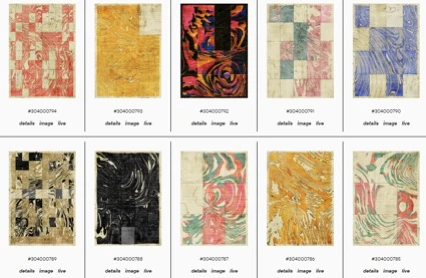
image description
secondary title
2.4 How to obtain Art Blocks sale information
image description
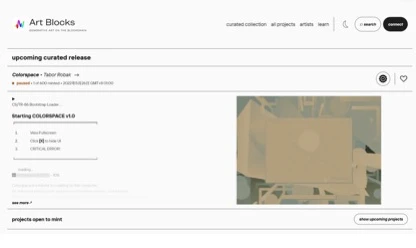
first level title
https://www.artblocks.io
03
image description

image description
https://cryptoart.io/artists
secondary title
3.1 Pak
When it comes to encryption and generative art, Pak cannot be avoided. He is a god-like existence in the field of encrypted art, and has more than 25 years of creative experience in the field of digital art. Most of his generative works of art are not generated on the chain, but are created by means of artificial intelligence in reality. As the founder and chief designer of Undream, Pak created the artificial intelligence Archillet, which fully automates more than 100 digital artworks every day. According to Cryptoart data, Pak sold a total of 66,320 works with a total value of 380 million US dollars, becoming the well-deserved number one.
If Art Blocks is the beginning of the complexity of art on the chain, Pak is to simplify generative art again and bring in social attributes. From a series of works of Pak, it is not difficult to find that he not only digitizes his works, but creates an unprecedented sensory experience through concept generation, technical practice and aesthetic escape.
Pak has two classic works, namely Merge and Censored. Pak has completed the best case of on-chain user participation and social experimentation in this way of artistic expression:
Mergeis generated on-chain as a smart contract, and its visual size and other elements will change based on the amount of pre-sold mass tokens held in each wallet.
Censoredimage description
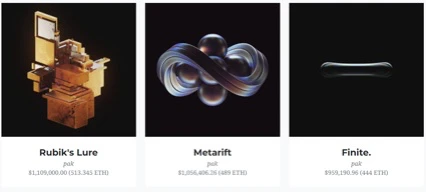
secondary title
3.2 Erick calderon(Snowfro)
Snowfro is not only the founder of Art Blocks, but also the first artist to publish works on Art Blocks. He entered the top ten of the encryption art list with only one work, Chromie Squiggle. As the first work of Art Blocks, Squiggle is also a community governance NFT, which is a milestone.
If you want to collect generated art NFT but don’t know which one to buy, maybe it’s a good way to collect a Squiggle, because it will gradually increase in value with the entire generated art NFT market just like the market index, invest in the Bitwise blue chip NFT index fund Among the works of Art Blocks, only Squiggle is collected.
image description
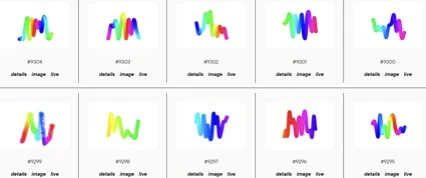
secondary title
3.3 Dmitri Cherniak
image description
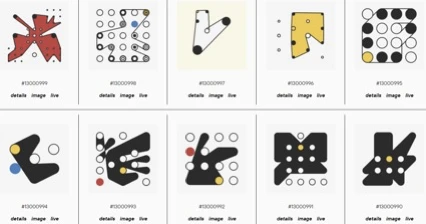
secondary title
3.4 Matt DesLauriers
image description
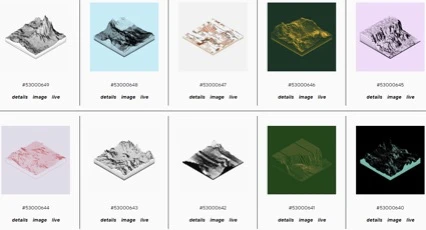
secondary title
3.5 Tyler Hobbs
Tyler Hobbs is a visual artist from Austin, Texas. His works have been exhibited internationally and collected by more than ten countries.
image description
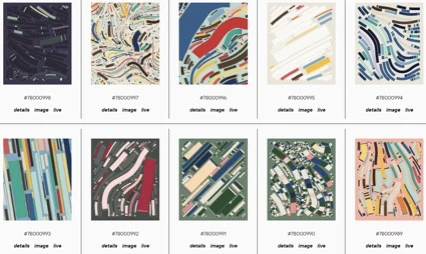
first level title
04
Investment Opportunities in Generative Arts
secondary title
4.1 Characteristics of the Generative Art Market
Art Blocks is still in the early stages of development and has a lot of room for development
The global art market is about 50 billion US dollars per year, which does not include NFT. In 2021, Art Blocks will sell more than 1 billion US dollars. As more and more collectors and investment institutions pay attention to the NFT investment field, more funds will flow to the NFT art field in the future, and some of them will also flow to Art Blocks.
The founder of Art Blocks continues to promote NFT generative art offline
He established an Art Blocks art gallery in Texas, and curated Chromie Squiggle in Miami, Manhattan, Chicago, and exhibitions at the ETHDenvor conference. It is foreseeable that such curatorial activities will become more frequent, and the curatorial venues will gradually enter hall-level large museums. In five years, Chromie Squiggle will enter the Museum of Modern Art in New York, and it is a high probability event to open more than 20 exhibitions. Through frequent curation, media reports, and public auctions, more institutional investors, art collectors, and traditional art collection funds will enter the market.
Most NFT users have a shallow understanding of generative art and strong speculative sentiment
In the survey, it was found that most NFT players are optimistic about the prospect of generative art, have high expectations for the diversified development of NFT and show a high willingness to invest, but their understanding of generative art is still relatively shallow, which also means The plasticity is relatively strong. On the other hand, generative art has a large space for innovation and exploration, and the content innovation itself, from the underlying code logic to themes, is enough to attract the attention of capital and users.
secondary title
4.2 Key Points of Generative Art Investment Investigation
The narrative of the work and how expressive the artist is
Good storytelling has always been a core element of success in the web 3.0 era. Different narratives will be supported by different audiences, which also creates a diversity in the field of generative art. Whether the artist can express unique concepts and aesthetics through generative art, and whether he can express the current social situation in the artwork, such as politics, technology, morality, values, etc., will be a bonus item for a generative artwork.
In addition, if you feel similar to the narrative after reading the work, or you can immediately understand the original intention of the author, it means that the author has successfully conveyed his ideas to the audience through the work. One of the important abilities of a generative artist.
Is the creators artistic background good enough?
Excellent generative art creators and ordinary creators are very different in how to use programs to express their artistic logic. The generative art of ordinary creators will feel stiff due to reasons such as programming, parameters, and insufficient training, while masters This will make the generated results more harmonious, such as the custom algorithm developed by visual artist Tyler Hobbs to generate visual images, the generated Fidenza series is of high quality and has been collected by more than ten countries.
How intuitive is the aesthetic feeling of the work?
The first thing is that everyone has their own most intuitive aesthetic standards. The color, structure, and lines of a work can determine how much people love him. Especially when some works have very rare elements, he is more likely to be loved by people, which is particularly prominent in the secondary market.
The pricing logic of artworks is still scarcity, fame and social media popularity.
Even these generative artworks produced by programs still need to partially obey the aesthetic and pricing order of the traditional art circle. If we can have a better understanding of the market logic of the traditional art circle, we will not have a price judgment that deviates too much from reality.
——Teferi Chiu, consultant of this article
TeferiChiu shared some of the logic that NFT artworks can learn from the traditional art circle. This is the secret to keeping artworks liquid and prices continuing to rise in the traditional art gallery industry:
If there were 100 potential buyers in the world, production would have to be limited to 50. This ensures that there is always demand in the secondary market and that collectors do not lose money.
Galleries never let collectors know the total number of works, and they always show them one by one slowly. When it is found that there are less and less people interested in it, the rest will be sealed up or even destroyed.
If you want to do long-term business, you have to spend money to build the artists reputation and brand, which is the most cost-effective investment.
Collectors will lose their confidence faster than anything if they are not given regular coverage of artists.
Word of mouth is the key to success. When people are talking about a certain artist, it means that he has investment potential. Advertisements and exhibitions alone will hardly help.
An international artist may have between 500,000 and 1,000,000 Instagram followers.
The purpose of holding exhibitions and events is to find opportunities for collectors to spend money in galleries, and to conduct hunger marketing on the spot.
Based on the above, NFT artworks need to meet the following points to become more valuable and maintain liquidity:
Create scarcity.
Continue to build the artists reputation and brand.
secondary title
4.3 Pay attention to Art Blocks boutique series
epilogue
05
epilogue
The birth of Art Blocks has shaped many peoples perception of generative art, and has also brought hype and investment value to the market. Compared with traditional artworks, the creation method of generative art seems to be more in line with the spirit of the encrypted world. However, speculative users account for the majority in the NFT market. They do not pay attention to art itself, but want to sell NFT at a higher price, which fuels the enthusiasm and makes art investment like a zero-sum game. However, as the heat of the market fades, the author recently observed that the investment in generative art in the market has returned to the essence of art, and the newly listed curated works of Art Blocks have risen steadily.
thank you
thank you
In the process of writing this article, after obtaining the consent of ZombieClub, the author quoted the content under the relevant topics in the ZombieClub Discord, and was deeply inspired in the process of reading and learning. ZombieClub is a community initiated by Shawn Yue, aiming to create a decentralized think tank organization that gathers the wisdom of the community.
Here, I would like to express my sincerest thanks and heartfelt thanks to the ZombieClub community!

